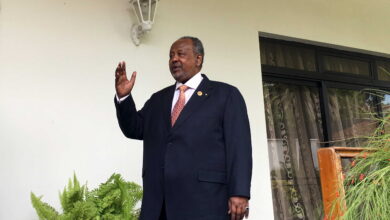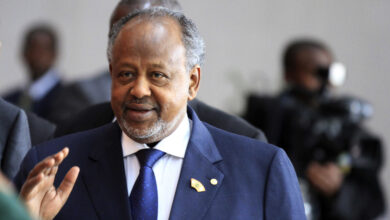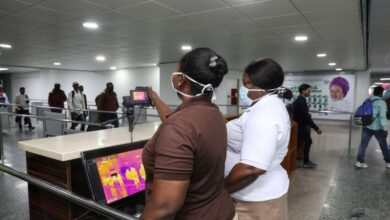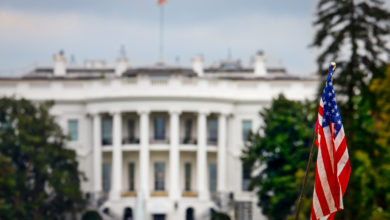Djibouti
Djibouti, in long form the Republic of Djibouti is a country in the Horn of Africa west coast of the southern outlet of the Red Sea. It borders Somalia (Somaliland) to the south, Ethiopia to the west, Eritrea to the north and has, across the Bab-el-Mandeb Strait, a maritime border with Yemen. The city of Tadjourah, seems to have constituted quite early one of the rare permanent agglomerations undoubtedly linked to the sultanate of Ifat then of Adal between the 13th and 16th centuries. But the territory corresponding to the current Republic of Djibouti was mainly formed during the extension of the French occupation from 1885: Obock Territory and dependencies until 1896, then the Somali French Coast until in 1967, then French Territory of Afars and Issas before gaining independence on June 27, 1977 under the name of Republic of Djibouti.
Djibouti’s history
Prehistory
The Djibouti area has been inhabited since at least the Neolithic. According to some linguists, the first Afro-Asiatic populations arrived in the region during this period from the urheimat proposed by the family (“original homeland”) in the Nile Valley or the Near East, while others researchers suggest that the Afro-Asian family develops in situ in the Horn, and that its speakers subsequently disperse.
Country of Punt
With Somalia, and southern Eritrea, the current Djiboutian territory may be part of the old territory called Pays de Pount (or Ta Netjeru, meaning “Land of God”) by the ancient Egyptians, including the first mention dates back to the fifteenth century BC.
Creation of the territory
On June 4, 1859, the Reunion merchant Henri Lambert, former French consular agent in Aden, was assassinated in the Gulf of Tadjourah. A mission led by the commander of the East Coast naval station, Viscount Alphonse Fleuriot de Langle, arrested the culprits, handed them over to the Turkish authorities, then sent a delegation of notable Afars to Paris. It was with a member of this delegation, the “representative” of the “Sultan of Tadjourah”, Dini Ahmed Abou Baker, that on March 11, 1862, Édouard Thouvenel, then Minister of Napoleon III, signed a treaty of peace and friendship perpetual by which France buys “the ports, harbor and anchorage of Obock located near Cape Ras Bir with the plain stretching from Ras Aly in the south to Ras Doumeirah in the north” for 10,000 thalers from Marie- Therese. It was not until 1884 that actual possession took place, with the arrival of a commander on August 1: Léonce Lagarde. It is therefore a question, within the framework of French colonial expansion towards Madagascar and Indochina, of creating a supply stop for ships on an imperial route. However, Léonce Lagarde extended the Obock Territory and dependencies under French sovereignty to the entire northern coast of the Gulf of Tadjourah, which was occupied in October-November 1884.
After an unsuccessful treaty with the “Sultan of Goba’ad” in January 1885, on March 26, 1885, an agreement with the “Issa chiefs” placed the south coast under French sovereignty. A territorial agreement with Great Britain, by the exchange of notes of February 2 and 9, 1888, stopped this expansion. It was the same year, in 1888, that the port of Djibouti was created, which became the capital of the new French Somali coast in 1896. In 1895, the city had 5,000 inhabitants. It is placed under the administrative authority of Bourhan Bey, son of the former governor (pasha) of Zeilah, Abu Bakr Ibrahim.
Until World War II
The construction, between 1897 and 1917, of the railway between Djibouti and Addis Ababa added a new dimension to the territory, consecrating it as a maritime gateway to modern Ethiopia. Taking advantage of the economic expansion brought by this communication route, the port is developing and the city is gradually being built. Somali and Afar workers build these houses which constitute the heart of the “European city” and which can still be admired, preserved in their original aesthetic.
Until 1939, the country experienced significant economic development, around the port, the railway and the salt flats. A large workforce flocked to the city, mainly from neighboring territories (mainly Ethiopia, British Somalia and Yemen). The invasion of Ethiopia by Italy in 1936 gave a temporary boost to commercial activity. During the Second World War, the Allies instituted a blockade of the country, the authorities of which chose to support the Vichy government. Part of the “indigenous population” is expelled from the city of Djibouti, which then experiences a serious crisis, even a real famine. The rallying of the territory to the Allies in December 1942 allowed its reintegration into economic circuits.
End of the colonial period
From World War II, the population of the city of Djibouti grew rapidly, officially rising from around 17,000 inhabitants in 1947, to 40,000 in the early 1960s, 62,000 in 1967, 118,000 in 1972 to exceed 150 000 inhabitants in the early 1980s. In 1949, Djibouti became a free port, its new currency, the Djibouti franc, was pegged to the American dollar. In the same year, violent clashes between groups identified as “issas” and “gadabuursi” resulted in several dozen deaths. They reveal the rivalries for access to the resource represented by the available work, in particular at the port. These tensions, which had already started before the Second World War, lasted until the end of the French presence, marked by the dismissal of the Yemeni dockers, then Somalis. After the manifestation of a demand for independence in August 1966, then social conflicts, a dam was erected around the city, officially to contain migrations. However, tensions persist. A referendum was organized on March 19, 1967 on the maintenance of the territory under French sovereignty. After a ballot marred by fraud that is difficult to quantify, officially 60.6% of voters approve a change in the name of the colony, which becomes the French Territory of Afars and Issas (TFAI). Its structures of government are modified but remain under French supervision. Political and social tensions remain strong. In February 1976, the dramatic kidnapping of a school bus in Loyada confirmed that it was no longer possible to keep the country in this repressive vice. In November 1975, Pierre Messmer announced a process which should lead to the independence of the territory. The electoral lists are open to residents to allow them to express themselves. In July 1976, Ali Aref Bourhan, linked to the Gaullist networks, resigned from the presidency of the Council of Government, he was replaced by Abdallah Mohamed Kamil.
An independent country
On May 8, 1977, the population, consulted for the third time (after 1958 and 1967) chose independence with officially 98.8% of the votes cast. It was proclaimed on June 27, with the birth of the Republic of Djibouti. Its first president is Hassan Gouled Aptidon, and four prime ministers follow one another in a year and a half. The last, Barkat Gourad Hamadou finally remains in office for 23 years. In 1981, a single party system was imposed. From 1991, a war pitted the government against the Front for the Restoration of Unity and Democracy (FRUD), led by Ahmed Dini, an emblematic figure of the Djiboutian opposition. After a first setback, the army regained control of the territory in 1994. It was then that a treaty was signed between part of the FRUD and the Djiboutian government. A more radical party (the armed FRUD) did not join the peace process until 2001. In 1992, after the start of the insurrection, a Constitution was adopted by referendum. It provides for a partial multiparty system with four parties. In 1999, Ismaïl Omar Guelleh became president of the Republic. He was re-elected in 2005, then, after an amendment to the Constitution, in 2011 and 2016. In early 2011, protests inspired by the Arab Spring were suppressed. In 2013, the legislative elections led to a serious electoral crisis and a repression of the regime against the Union for National Salvation (USN), a coalition of the seven Djiboutian opposition parties. It led to the signing between the latter and the government of a political framework agreement on December 30, 2014. The ten opposition deputies who started sitting shortly after were the first since independence. In 2017, after the United States, France and Japan, China obtained the power to establish a military base there.
Djibouti’s politics
Djibouti is a republic since its independence in 1977, it organizes its first legislative elections and presidential election in 1981. It knows a single party until 1992, date on which is recognized a controlled and partial multiparty system. It follows the “principle” of separation of powers: legislative, executive and judicial.
International organisations
Djibouti is a member of many international organizations, in particular the United Nations (UN) and its subsets (FAO, WHO, etc.), the African Union (AU), the Arab League, the Intergovernmental Authority for the development; in addition, it is a member of the Common Market for Eastern and Southern Africa (COMESA – Common Market for Eastern and Southern Africa), as well as of the Intergovernmental Authority on Development (IGAD), etc. Djibouti is also a member of the International Monetary Fund (IMF) and the World Bank and the Organization of Islamic Cooperation.
Francophonie
The country is also a member of the International Organization of La Francophonie. The regions of Dikhil and Tadjourah are members of the International Association of Francophone Regions. The city of Djibouti is a member of the International Association of Francophone Mayors.
Djibouti’s economy
Gross domestic product per capita is around 3,200 euros / year (2008 estimate), well above the African average. The Djiboutian economy is very largely dependent on its tertiary sector (82% of GDP). The main industrial activity is the port of Djibouti, and now its extension to Doraleh. In 2015, the use of Djiboutian ports by landlocked Ethiopia generated significant resources (80% of Ethiopian imports and exports passed through Djibouti in 2015). The country is poor in industrial activities (15% of the GDP) and especially agricultural (3% of the GDP). For its food needs, Djibouti gets its supplies from its neighbors (Ethiopia, Somalia and Yemen) and, as regards manufactured products, mainly from France. The state is the country’s main employer, 19 but the country officially has a very high unemployment rate (70% of the working population). The rents paid by several countries for the establishment of military bases and, in recent years, the arrival of American soldiers and the arrival of new banks are contributing to an improvement in the economic situation. The country also receives international assistance. France provides economic aid to the country and participates in many infrastructures, including the Joseph-Kessel high school in central Djibouti in 1991.
Industrial and mining sector
The Republic of Djibouti has significant resources [ref. necessary] such as gold, natural gas, copper, zinc, as well as iron and aluminum. The existence of diversified natural resources is increasingly confirmed in the Republic of Djibouti, as with the discovery of the presence of gold in the locality of Hess Daba in the region of Dikhil in May 2007.
Salt
From the beginning of the 20th century to the 1950s, the French Somali Coast was a major producer of salt, along with the salt pans that surround the city of Djibouti. In the early 2000s, industrial exploitation of salt from Lake Assal began.
Djibouti’s demography
According to the preliminary results of the 2009 census, the Republic of Djibouti has approximately 818,159 inhabitants. The city of Djibouti itself has 475,350 inhabitants (about 58% of the country’s population).
Weather
Djibouti has a hot desert climate (Köppen BWh classification). A hot arid climate is unusual for latitudes as low as that of Djibouti. Rainfall is very rare, very weak, irregular and widely spaced over time, with an annual average between 50 and 180 mm which varies according to the regions of the country. On average, there are between 5 and 20 rainy days per year. The hot weather is constant and lasts throughout the year. Maximum average temperatures range from 27 ° C during the “coolest” months to 43 °C during the warmest months locally, notably in Tadjourah. Although Djibouti is a desert and arid country, the humidity is very high because of the proximity to the sea and the hot weather associated with high ambient humidity often gives a heavy and unpleasant feeling. However, sinking inland towards the interior of the country, the air becomes drier and also warmer. During the hot season, a very hot, very dry and sometimes dusty wind, the khamsin, blows around fifty days and is responsible for the sudden increase in maximum temperatures (often above 45 ° C). The sky is generally clear with an average annual duration of sunshine varying between 3,200 and 3,600 hours with a fairly small monthly variation. The climate is hot, dry and sunny all year round. The desert climate of Djibouti is very particular because of its proximity to the equator, thus the seasonality is reduced and the daily and annual thermal amplitudes are abnormally low for such a climate. However, places at high altitudes like Randa for example benefit from a less hot climate and especially less arid than the low altitudes: these benefit from a semi-arid warm climate (classification of Köppen BSh) with precipitations higher than 250 mm per year and maximum temperatures of 23 ° C during the “coolest” months to 37 ° C during the warmest months.
Djibouti’s education
Djibouti has a university and a study and research center (CERD).
French and Arabic are the country’s official languages, used in particular for education and administration. Afar and Somali are said to be “national languages”. Along with Oromo and Amharic in the city of Djibouti, these are the main languages of daily life. Since the installation of a US military base in 2002, English has been more present.
-
Djibouti

Djibouti’s Longtime Ruler Ismail Omar Guelleh Wins Fifth Term With Over 98% Votes
Djibouti’s longtime ruler Ismail Omar Guelleh has won a fifth term as president with more than 98 percent of the…
Read More » -
Djibouti

Djibouti: Voting Begins As Long Time President Ismail Omar Guelleh Seeks Fifth Term
Voting began on Friday in Djibouti where President Ismail Omar Guelleh is seeking a fifth term after ruling the country…
Read More » -
Djibouti

Djibouti To Begin Lifting Lockdown Measures Despite Increasing Coronavirus Cases
The Djibouti government will soon begin lifting lockdown measures in a bid to relieve pressure on its economy, reported Aljazeera.…
Read More » -
Burkina Faso

The U.S. Considering Plan To Put New Travel Restrictions On African Countries
A new report suggests the United States government is planning to put stricter travel restrictions for countries whose nationals frequently…
Read More »

